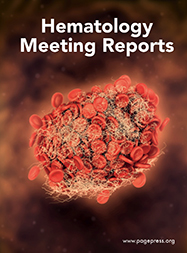Abstracts
8 June 2009
Vol. 2 No. 3 (2006)
TLR3 ligand induces a direct costimulatory effect on phoshoantigen stimulated human γδ T cells, but not on aminobisphosphonate-stimulated human γδ T cells
Publisher's note
All claims expressed in this article are solely those of the authors and do not necessarily represent those of their affiliated organizations, or those of the publisher, the editors and the reviewers. Any product that may be evaluated in this article or claim that may be made by its manufacturer is not guaranteed or endorsed by the publisher.
All claims expressed in this article are solely those of the authors and do not necessarily represent those of their affiliated organizations, or those of the publisher, the editors and the reviewers. Any product that may be evaluated in this article or claim that may be made by its manufacturer is not guaranteed or endorsed by the publisher.
170
Views
274
Downloads






